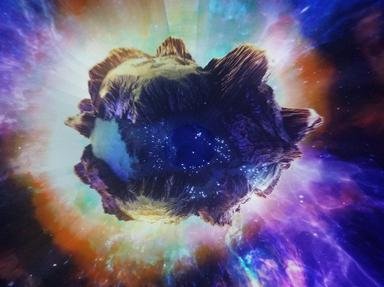Quiz Answer Key and Fun Facts
1. In 1994, a comet was captured by Jupiter's gravity. It split up and pummelled our Solar System's largest planet with a series of massive impacts. What was the name of this comet?
2. Comets are often portrayed in historical literature as being a portent of doom. For the English King Harold in 1066 it certainly was, as William the Conqueror defeated his troops in the Battle of Hastings.
William then went to document his great victory in the Bayeux Tapestry. Which famous comet or 'hairy star' features in this magnificent medieval propaganda piece?
3. The last quarter of the 20th Century was a quiet period for bright comets, with no comets bright enough to be called 'Great' since Comet West in 1976. Then all of a sudden, like buses, two turned up within a year of each other, in 1996 and 1997. What were the names of these two bright visitors?
4. Regardless of bizarre suicide-cult beliefs, there is actually a real danger from comets. Where on earth is it believed that a comet exploded, as recently as 1908?
5. Hoots-mate. There was a very bright comet in 2006-7, discovered by a British-Australian Astronomer. This turned out to be the brightest comet in over 40 years, and with a magnitude of -6 (brighter than Venus!) was even visible in broad daylight. What was the name of this brilliant non-periodic visitor (think Scottish)?
6. There are three main types of comets: the one-off hyperbolic or 'apparition' comets, long period comets such as Halley, and short period comets. What is the name of the shortest period comet of all - with an orbital period of 3.3 earth years?
7. During comet Halley's 1986 visit, a European Space Agency probe passed within 600km of Halley, taking spectacular photos of the nucleus, whilst sustaining damage caused by high speed particle impacts. What was the name of this probe?
8. Shades of Hollywood here. What was the movie-like name of the probe that crashed patriotically into Comet Tempel 1 on the 4th of July 2006?
9. This notable comet was the third to be recognised as a periodic comet in 1826 with an orbital period of 6.6 years. In subsequent visits it split in two, before disappearing altogether, perhaps re-appearing as the spectacular 'Andromedids' meteor shower in 1872. What is the name of this famously dead comet?
10. OK, I'm scared of impending cosmic armageddon now. But what can I do? To find a comet you need a telescope the size of Texas and a billion dollars...
Source: Author
fijikiwi
This quiz was reviewed by FunTrivia editor
rossian before going online.
Any errors found in FunTrivia content are routinely corrected through our feedback system.

